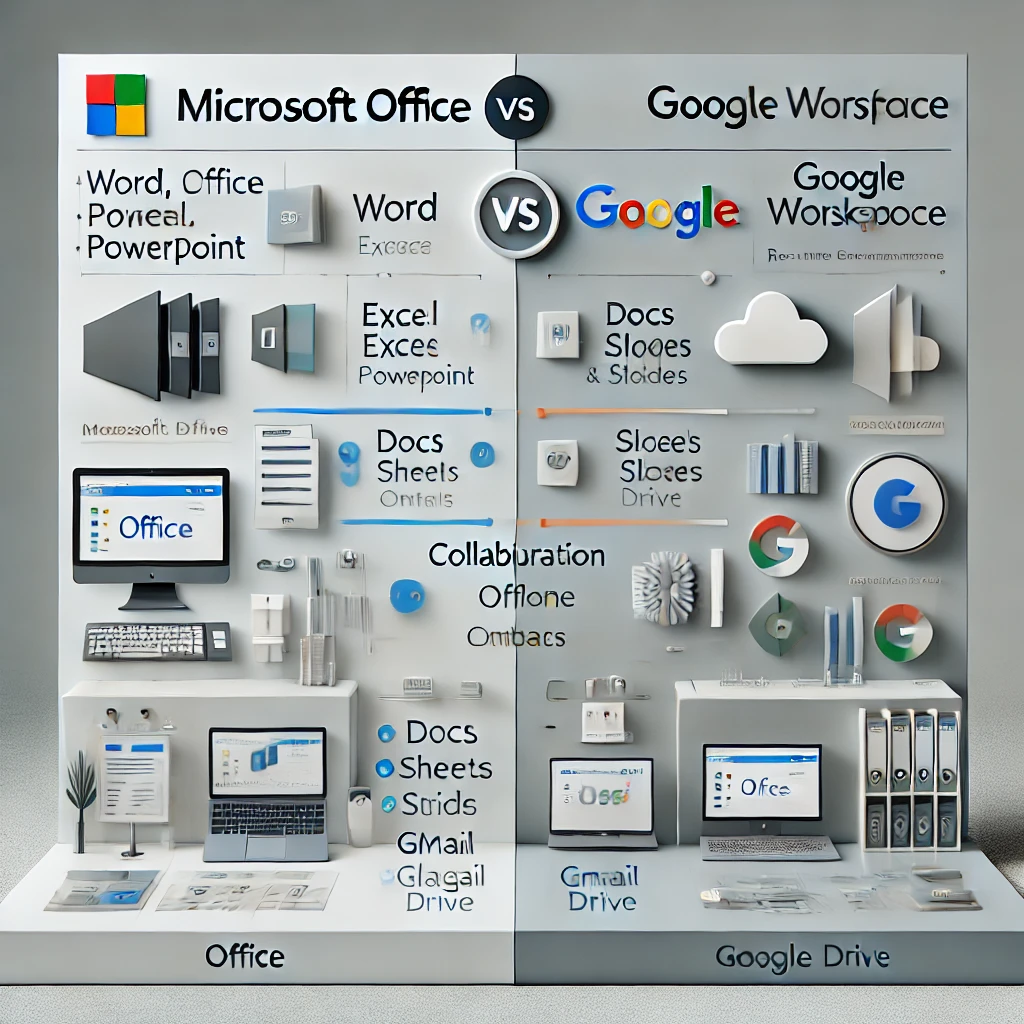Productivity software refers to tools that help individuals and teams complete tasks efficiently. Below is an overview of two popular productivity software suites: Microsoft Office and Google Workspace.

—1. Microsoft Office
Microsoft Office is a widely-used productivity suite with both desktop and cloud-based tools.
Key ApplicationsMicrosoft Word: For creating and editing text documents.
Microsoft Excel: A powerful tool for data analysis, spreadsheets, and financial modeling.Microsoft PowerPoint: Used to create professional presentations.
Microsoft Outlook: Email and calendar management.
Microsoft Access: A database management system.
Microsoft Teams: Collaboration and communication platform.
Feature
sAdvanced formatting options in Word and Excel.
Compatibility with desktop and cloud (Microsoft 365).
Integration with other Microsoft services like OneDrive and SharePoint.
Extensive templates for documents, presentations, and spreadsheets.
Advantages
Powerful tools for data-heavy tasks and professional document design.
Offline functionality with robust desktop applications.
Advanced security features for business environments.
Use Cases
Suitable for businesses, professionals, and students requiring advanced features.
Commonly used for creating reports, managing budgets, and corporate presentations.
—2. Google Workspace (formerly G Suite)
Google Workspace is a cloud-based suite designed for real-time collaboration and easy access across devices.
Key Applications
Google Docs:For creating and editing text documents.
Google Sheets: Spreadsheet application for data analysis and tracking.
Google Slides: For creating engaging presentations.Gmail: Email service integrated with other Google tools.
Google Drive: Cloud storage for files and backups.
Google Meet: Video conferencing tool.
Features
Real-time collaboration and sharing.
Automatic saving of documents to Google Drive.
Accessible from any device with an internet connection.
Extensive add-ons and integrations with third-party apps.
Advantages
Simple, user-friendly interface.
Collaboration features like comments, suggestions, and simultaneous editing.
Free version available with most essential features.
Use Cases
Ideal for remote teams, students, and small businesses.
Commonly used for collaborative projects, sharing documents, and lightweight tasks.
–

